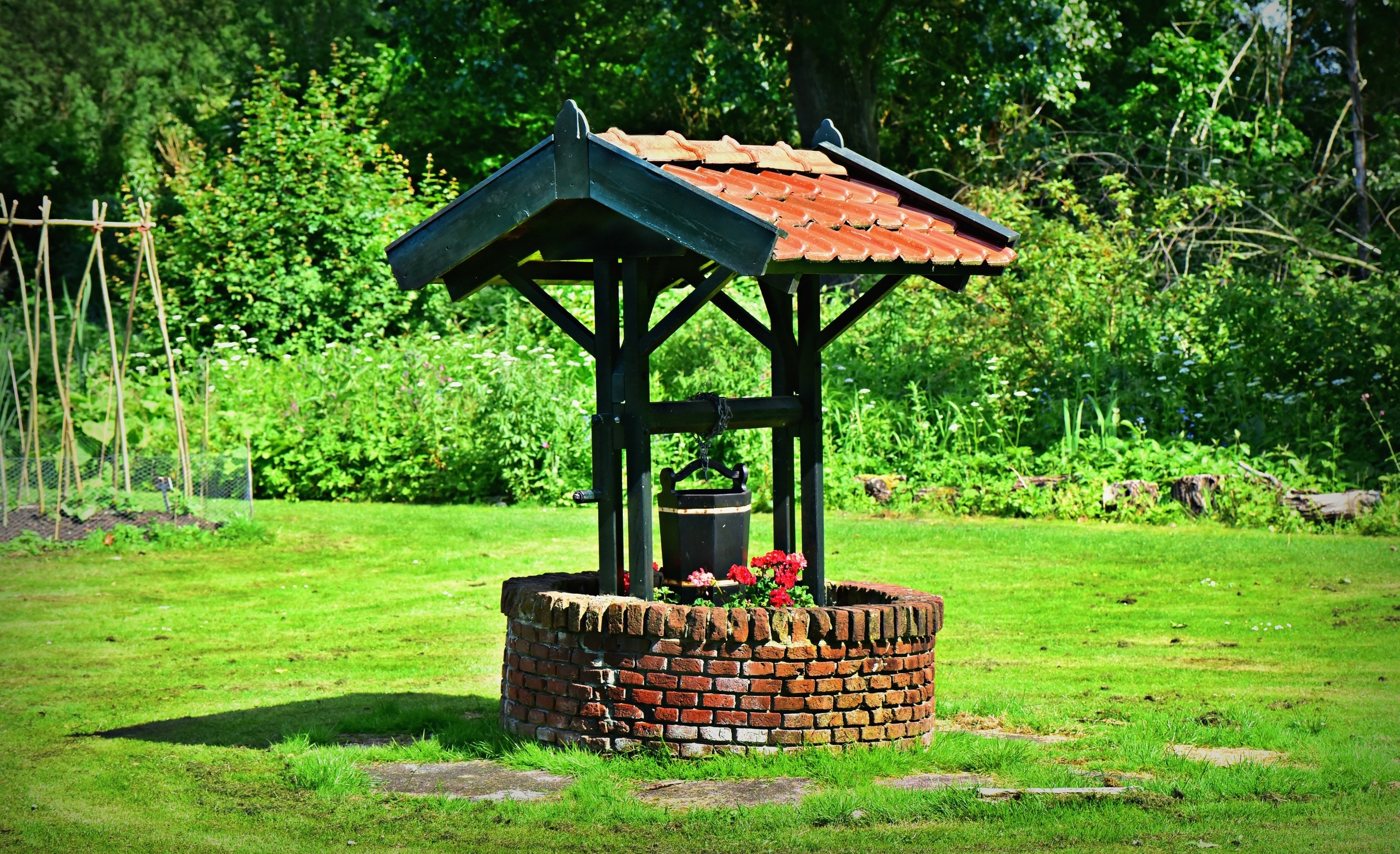
How To Dig A Water Well
Learning how to dig a water well is an essential skill if you want to live off the grid. Water is essential for life, and having your own well can be a game changer. Imagine the freedom of accessing fresh groundwater right from your property!
Whether you’re looking to reduce utility bills, provide irrigation for your garden, or simply enjoy that satisfying independence from city water supply, digging a water well might just be the perfect solution. But where do you start? The process may seem daunting at first glance.
However, with the right knowledge and preparation, you’ll discover it’s not as complicated as it sounds. From understanding different types of wells to navigating permits and equipment selection, this guide will walk you through everything you need to know about how to dig a water well successfully.
Let’s dive in!
Types of Water Wells
When it comes to water wells, there are several types to consider. Each type serves different purposes and is suited for various situations. The most common type is the drilled well. This method involves using a drill rig to bore deep into the ground. It reaches aquifers that may be far below the surface, providing a reliable source of clean water.
Another option is the dug well. These wells are excavated by hand or machinery and tend to be shallow. While they’re easier to create, they can be more susceptible to contamination due to their proximity to surface pollutants. Driven wells offer a third choice.
They consist of narrow pipes driven into sandy soil until groundwater is reached. Although quicker and less expensive than other methods, they typically yield lower volumes of water. Choosing the right type depends on your specific needs and local geology. Understanding these options will help you make informed decisions about your water supply.
Benefits of Digging Your Own Water Well
Digging your own water well offers a range of compelling advantages. First and foremost, it provides a reliable source of water. When municipal supplies face shortages or disruptions, having your own well ensures you can access fresh water consistently.
Additionally, you’ll gain greater control over the quality of your water. By monitoring the drilling process and choosing filtration systems that suit your needs, you can ensure clean drinking water for your family. Cost savings also play a significant role in this decision.
While initial investments may be higher than paying monthly utility bills, long-term savings can add up quickly. Another benefit is independence from local regulations or potential rate increases associated with city services. You are free to manage and maintain your supply without outside influence.
Digging a well adds value to your property. Prospective buyers often view homes with established wells as more desirable due to their sustainable resource appeal.
Factors to Consider Before Digging a Water Well
Before you embark on the journey of digging a water well, several critical factors demand your attention. First, assess local regulations. Many areas have strict guidelines governing well construction. Ignoring these can lead to costly penalties or even forced abandonment of your project.
Next, consider your land’s geology. Different soil types and rock formations affect drilling difficulty and water quality. It’s wise to consult geological surveys or experts familiar with your region. Water availability is another crucial factor. Investigate existing wells nearby to gauge how deep they are and their yield rates.
This information helps estimate what you might expect from your own well. Think about future maintenance costs. Wells require ongoing care for optimal performance, including regular testing for contaminants and mechanical upkeep over time. Make sure you’re prepared for this commitment before moving forward.
Preparing for the Digging Process
Preparing for the digging process is a crucial step that can set the tone for your entire project. Before you start, take time to research local regulations regarding water wells. Each area has specific guidelines you’ll need to follow. Next, gather your resources.
This includes tools and equipment like shovels, buckets, and possibly a drilling rig if you’re going deeper. Don’t forget safety gear—gloves and goggles are essential to protect yourself during the dig. Consider enlisting help from friends or family.
Digging a well can be labor-intensive, so having extra hands makes it manageable and even enjoyable. Think about logistics. Ensure accessibility to the site for transporting materials and disposing of excavated soil. Being organized at this stage will save you time and effort later on when you’re knee-deep in dirt!
The Step-by-Step Guide to Digging a Water Well
Digging a water well can seem daunting, but breaking it down into manageable steps makes the process more approachable. So grab your shovel and let’s get started!
Step 1: Obtain Necessary Permits and Approvals
Before you grab your shovel, it’s crucial to tackle the paperwork. Every state has specific regulations regarding water wells. Failing to obtain the necessary permits can lead to hefty fines.
Start by checking with local authorities or your state’s natural resources department. They will provide guidelines on what is required in your area. Some regions might even require a hydrological survey.
Don’t forget about zoning laws as well. Ensuring compliance protects not just your investment but also the environment and community resources.
If you’re unsure where to begin, consider reaching out for expert advice or consulting a professional well driller who understands local requirements. This upfront effort lays a solid foundation for a successful digging project later on. Taking care of legalities early saves time and headaches down the road, allowing you to focus on getting that sweet groundwater flowing!
Step 2: Choose the Right Location for Your Well
Selecting the right location for your water well is crucial. The site should ideally be away from potential contaminants, such as septic tanks or livestock areas. A minimum distance of 100 feet is generally recommended.
Consider the topography of your land. Higher ground can help prevent flooding and reduce contamination risks from surface runoff. Look for natural slopes that lead to a stable groundwater source.
Access to utilities also matters. Ensure you have adequate space around the well for maintenance and repairs, which makes accessibility essential.
Consult with local experts or geological surveys if possible. They can provide insights into underground aquifers in your area, helping you make an informed decision about where to dig your well. This step lays a solid foundation for creating a reliable water supply system tailored to your needs.
Step 3: Gather Supplies and Equipment
Gathering the right supplies and equipment is crucial for a successful well-digging project. Start by listing what you’ll need. Essentials include shovels, buckets, and a digging bar. These tools will help you break through soil layers efficiently.
Don’t forget about safety gear. Gloves, goggles, and sturdy boots can protect you from potential hazards while working.
If you’re considering deeper wells or rocky terrain, renting specialized equipment like an auger or drilling rig may be wise. This machinery can save time and effort as it penetrates hard ground more effectively.
You might also want to have water available on-site for hydration breaks—digging can be laborious work!
Consider having a partner assist with the process; teamwork makes heavy lifting easier and ensures that everything runs smoothly during your project.
Step 4: Start Digging!
With your permits obtained and location chosen, it’s time to get your hands dirty. Starting the digging process can be both exciting and daunting.
Begin by marking the exact spot where you’ll dig. This ensures you stay on target throughout the project. A shovel or post-hole digger will suffice for shallow wells, but a auger might be necessary for deeper holes.
As you break ground, pay attention to the soil type. Sandy soils are easier to work with than rocky ones, which may require more effort and possibly special tools.
Remember that safety is paramount during this phase. Wear gloves and protective eyewear to guard against debris and dust. Take breaks as needed; staying alert helps maintain focus.
Digging can produce a lot of debris, so have a plan in place for disposing of excess soil effectively without creating hazards around your site.
Step 5: Install Casing and Screen
Once you’ve dug deep enough to reach the water table, it’s time to install casing and screen. This step is crucial for ensuring that your well remains functional and safe.
Casing is typically made from PVC or steel. It prevents the walls of your well from collapsing and protects groundwater from contamination. Choose the right diameter based on how much water you’ll need.
Next, add a well screen at the bottom of the casing. The screen allows water to flow in while keeping out sand and gravel. Proper installation here can prevent clogging later on.
Make sure everything fits snugly together. Seal any gaps using appropriate materials to avoid any intrusion by surface contaminants. A solid foundation now sets up your well for long-term success down the line.
Step 6: Add Gravel
After setting your well casing, it’s time to add gravel. This step is crucial for effective filtration and support.
Start by selecting clean, washed gravel. It should be small enough to allow water flow but large enough to prevent sediment from entering the well. A size range of 1/8 inch to 3/4 inch works best.
Pour the gravel slowly around the casing. Ensure it fills the space evenly without displacing the casing itself. Take care not to compact it too tightly; you want to create a porous barrier that allows groundwater to seep in freely.
Once you’ve added sufficient gravel, you can check that there’s at least two feet of protection above where your water enters. This layer acts as a filter, keeping unwanted particles out while letting fresh water flow in smoothly.
Step 7: Adding a Well Cap and Pump System
Once you’ve finished digging, it’s time to install the well cap and pump system. The well cap is an essential component that protects your water source from contaminants. It seals off the top of the casing, preventing debris, insects, and animals from entering.
Choose a durable material for your well cap. Options typically include plastic or metal designed for longevity in outdoor conditions. Make sure it fits snugly over the casing. This will ensure a tight seal.
Next comes the pump system. Selecting the right pump depends on factors like depth and water demand. Submersible pumps are popular for deeper wells, while shallow wells often use jet pumps.
Follow manufacturer guidelines for installation carefully to avoid issues down the line. Once everything is securely in place, you’ll be ready to access clean groundwater whenever needed!
Maintaining and Troubleshooting Your Water Well
Regular maintenance is essential for the longevity of your water well. Schedule annual inspections to check for signs of wear, corrosion, or sediment buildup. These assessments can prevent more significant issues down the line. Keep an eye on water quality as well.
Testing should occur at least once a year or after heavy rainfall. Look out for changes in taste, color, or odor; these could signal contamination. If you notice fluctuating water pressure or strange noises from your pump system, investigate immediately.
Such symptoms might indicate mechanical failures that require prompt repairs. Consider keeping a maintenance log to track service dates and findings. This documentation helps spot patterns over time and simplifies troubleshooting when problems arise.
Don’t hesitate to reach out to professionals for complex issues beyond your expertise. Experts can provide guidance on advanced diagnostics and necessary fixes.
Alternative Methods for Accessing Groundwater
Accessing groundwater doesn’t always require digging a traditional well. There are several alternative methods worth exploring. One popular option is using a hand pump system. This method allows you to extract water from shallow aquifers without extensive drilling. It’s cost-effective and can be ideal for smaller properties.
Another technique involves utilizing rainwater harvesting systems. By collecting rainwater from roofs and surfaces, homeowners can supplement their water supply significantly. Water divination or dowsing is an ancient practice where individuals use sticks or rods to locate underground water sources.
While scientific evidence supporting its efficacy is limited, many swear by its effectiveness. Consider solar-powered pumps for deep wells. They harness sunlight to draw up groundwater efficiently, reducing reliance on electrical grids while being environmentally friendly.
Conclusion: Is Digging a Water Well Right for You?
Deciding whether to dig a water well is an important choice that involves various factors. Think about your location, water needs, and budget. Assess the local regulations regarding well construction and maintenance; these can vary significantly by region.
Evaluate the benefits against potential challenges. A private water supply offers independence from municipal sources but requires ongoing maintenance and monitoring. Consider if you have the resources—time, tools, knowledge—to manage a DIY project or if hiring professionals might be more suitable for your situation.
Digging a water well can provide numerous advantages like cost savings in the long run and access to fresh groundwater. However, it also demands careful planning and consideration of environmental impacts. Whatever path you choose, ensure it’s informed and meets your personal needs for safe drinking water.



